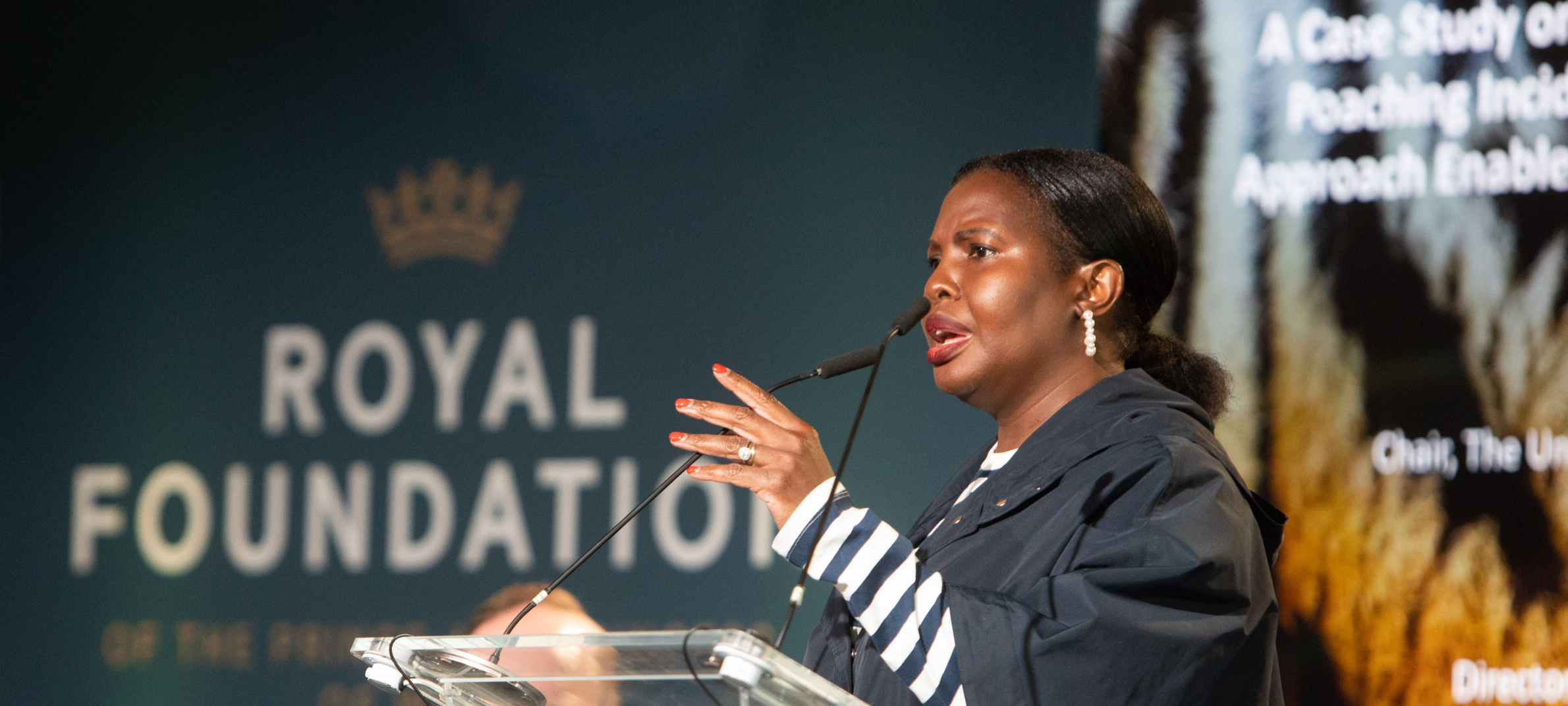
In a guest blog for United for Wildlife, Max Weston, Intelligence Officer for the Environmental Investigation Agency, reflects on trends in wildlife trafficking since the COVID-19 pandemic.
The year is 2023, and humanity has emerged, damaged but not beaten, by a brutal and deadly pandemic. With our own mortality no longer squaring us so directly in the face, we breathe. We look around and remember there were other things that concerned us before this bad dream, things beyond ourselves and our families.
It wasn’t our loved ones but the world’s biodiversity which was in a critical condition before the pandemic. Life-breathing forests were being torn down at alarming rates. Poaching was pushing some of the world’s most iconic species: the tiger, the rhino, the elephant and the pangolin, towards extinction. Highly organised criminal groups commoditised the mass murder of these animals into a highly lucrative and transcontinental illegal wildlife trade.
It is this lamentable trade that has been the core focus of the work of a (deliberately) low-profile but high impact non-governmental organisation called the Environmental Investigation Agency for close to 40 years. Headquartered in London, with a highly skilled and multinational team of undercover investigators, the EIA infiltrates major international wildlife trafficking networks, gathering critical intelligence which is used to develop long-term, sustainable responses to wildlife crime. The comprehensive and hard-to-extract information gathered by EIA, allows the organisation to compile detailed analyses of the latest trends and methods in illegal wildlife crime, enabling partners in government, law enforcement and civil society to stay ahead of the game.
The work of EIA never ceases. But the COVID pandemic stopped much of the world in its tracks. Its impact was far reaching, changing our relationship to the natural world and having a significant impact on the way the illegal wildlife trade works too.
Global demand for illegal wildlife trade commodities was dampened by the pandemic. Chinese customers, which constitute a significant proportion of global demand for wildlife products, returned home en masse from the wildlife-rich markets of West and Central Africa. In China itself, there was less money to spend on luxuries like ivory bangles or tiger bone wine. Movement was severely restricted and the border with Vietnam – China’s neighbourhood wildlife market of choice – became less easy and more expensive to move goods through.
As demand weakened, some of the world’s largest traders of wildlife commodities – both in Africa and in Asia – were forced to take bigger risks to secure business. As with the rest of us, they moved to remote working and would spend hours trying to strike deals from afar.
But how have things changed changed since the pandemic began to subside? Of course, it did so at varying speeds. In Europe, things started to open up from the end of 2021, but in China, borders were only opened to foreign tourists for the first time since the pandemic in March 2023. EIA delved into its trove of intelligence gathered by its investigators to pull out some key themes.
Firstly, it’s important to say that both during and since the pandemic, the illegal wildlife trade in key commodities – ivory, pangolin scales, rhino horn and tiger parts – has continued at a worrying scale. This is demonstrated by continued large smuggling incidents, such as in July 2022 when six tonnes of ivory, pangolin scales and rhino horn, sent from Africa, were intercepted by authorities at the port of Pasir Gudang in Malaysia. Another example is the March 2023 seizure of seven tonnes of ivory by Vietnamese authorities at the Port of Haiphong. It’s origin: Angola.
These incidents, and intelligence gathered by EIA, point to Malaysia continuing to be a major hub in the Africa-Asia ivory, rhino horn and pangolin scale trade. On the African side, Nigeria continues to be the most active export hub; whereas in Asia, Vietnam has kept its role as the main trafficking and transit hub for China, which drives global demand for IWT commodities.
Certain things, however, are changing. China opened its borders to quarantine free travel earlier this year, meaning that consumers can return to the major pre-pandemic wildlife commodity sourcing destinations. Traders in Nigeria, who complained about a lack of customers during COVID, report seeing Chinese buyers coming back to the country. There are less of them, and they are interested in smaller quantities of goods than before, but it’s a sign nonetheless: demand is reawakening
Further up the trade chain – in Vietnam – traders also report a reawakening of demand from their China-based customers, although it remains below pre-pandemic levels (something which is reflected in the lower prices for key wildlife commodities when compared to before the pandemic). As the Vietnam–China border opens up further and becomes easier to move goods through, traders in Vietnam expect an increase in sales.
Vietnamese traders maintain their dominance in the big cat trade in Vietnam and Laos. What’s more, EIA has seen signs that there is an increase in lion bone being sourced across West and Central Africa –perhaps reflective of the increased demand for bone glue in Vietnam during COVID.
In neighbouring Laos, home to illegal tiger farms, which fuel the international trade in these endangered animals’ parts, traders report that pre-pandemic smuggling routes – such as the Africa to Laos air route via Malaysia – are being opened up again through negotiations with border and airport officials.
In Nigeria, Africa’s main trade hub for illegal wildlife commodities, traders are becoming more suspicious, more nervous and potentially harder to catch. A series of arrests by Nigerian authorities in 2022 and 2023 had a big impact on how traders operate. Lagos – the nation’s economic capital and previously the main port of export for IWT – is now considered “too hot” by many traffickers, leading to a shift to exporting from more remote ports, where there is less awareness regarding illegal wildlife commodities. Despite Nigeria becoming less of an easy place to do business, traffickers still recommend Nigeria as the best place to trade and export in West and Central Africa.
Jumping back to Asia, the end destination for most of the illegal wildlife commodities sourced in Africa. Here intelligence gathered by EIA points to a few more noteworthy trends.
Firstly, during the pandemic, it was the big-time traffickers with the best connections who were able to keep moving goods like ivory, rhino horn and pangolin scale across the key smuggling border from Vietnam into China. Everyone else found it much more difficult to move highly illicit goods along the same routes due to stricter border controls. This caused them to shift tactics: choosing to focus on smaller wildlife commodities with a high value to weight ratio (e.g. sea horses). They moved goods in smaller volumes, but at increased frequency. Now things are opening up, it may be easier for smaller traders to gain a foothold in the ivory and pangolin scale trade again.
To take stock, although the pandemic dampened global demand for illegal wildlife commodities, the belated exit of China from lockdown restrictions and the renewed confidence of Nigerian and Vietnamese traders gives cause for concern. The largest buyers of wildlife are now free to travel, free to spend and free to import. Governments, law enforcement and civil society need to be primed and ready to respond to an expected resurgence in demand. At the same time, wildlife criminals are becoming more sophisticated.
Once-brazen traders in Nigeria are now adopting the more careful and clandestine ways of their Vietnam-based colleagues. A surge in law enforcement and civil society activity to disrupt the illegal wildlife trade in 2022 and 2023 in Nigeria has meant some big headlines, but this poses its own challenges. Those seeking to disrupt the illegal wildlife trade need to employ ever more sophisticated methods to stay one step ahead of traders. Gathering detailed intelligence from the traders themselves is now more critical than ever.
EIA are not expecting to be able to put their feet up any time soon.
Related Posts





